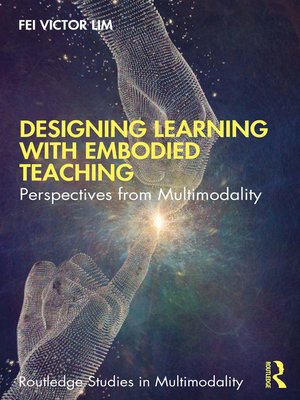Designing Learning with Embodied Teaching
ebook ∣ Perspectives from Multimodality · Routledge Studies in Multimodality
By Fei Victor Lim

Sign up to save your library
With an OverDrive account, you can save your favorite libraries for at-a-glance information about availability. Find out more about OverDrive accounts.
Find this title in Libby, the library reading app by OverDrive.



Search for a digital library with this title
Title found at these libraries:
| Library Name | Distance |
|---|---|
| Loading... |
Teaching and learning involve more than just language. The teachers' use of gestures, the classroom spaces they occupy and the movements they make, as well as the tools they use, work together with language as a multimodal ensemble of meanings. Embodied teaching is about applying the understandings from multimodal communication to the classroom. It is about helping teachers recognise that the moves they make and the tools they use in the classroom are part of their pedagogy and contribute to the design of the students' learning experience.
In response to the changing profile and needs of learners in this digital age, pedagogic shifts are required. A shift is the evolving role of teachers from authority of knowledge to designers of learning. This book discusses how, using examples drawn from case studies, teachers can use corporeal resources and (digital) tools to design learning experiences for their students. It advances the argument that the study of the teachers' use of language, gestures, positioning, and movement in the classroom, from a multimodal perspective, can be productive.
This book is intended for educational researchers and teacher practitioners, as well as curriculum specialists and policy makers. The central proposition is that as teachers develop a semiotic awareness of how their use of various meaning-making resources express their unique pedagogy they can use these multimodal resources aptly and fluently to design meaningful learning experiences. This book also presents a case for further research in educational semiotics to understand the embodied ways of meaning-making in the pedagogic context.







